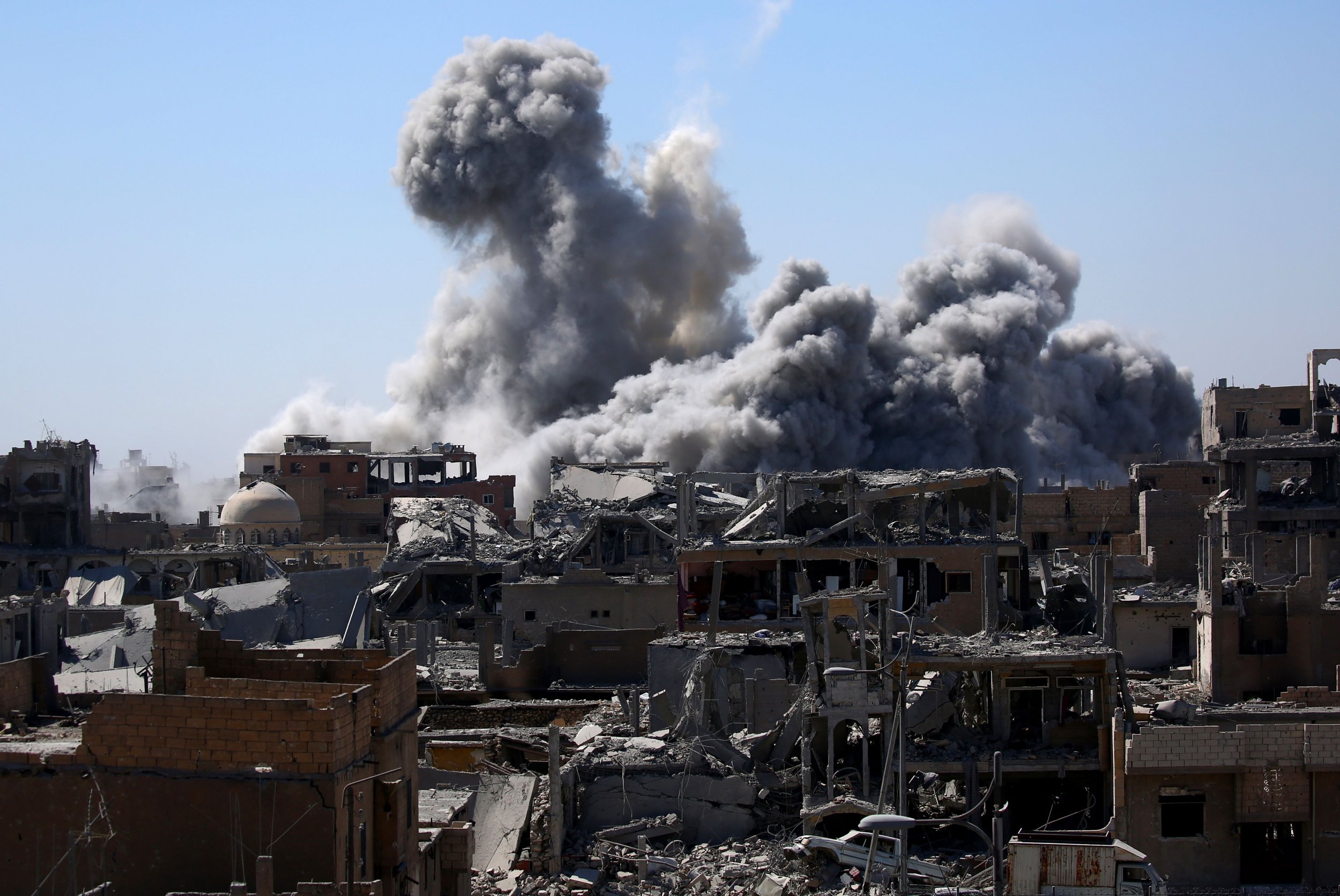
As we drive up, the desolate farm in the shadow of north-western Iraq's Sinjar Mountain looks like many others in the area. The farmhouse is abandoned, the fields are barren. A neighbour, curious about our visit, wanders over and explains that the owner used to grow olives, wheat and vegetables. But, like half of the farmers in this village, he and his family haven't returned since fleeing from the armed group calling itself Islamic State (ISIS) four years ago.
Why? One clue is the large water tank near the farm's irrigation well: empty. Another is the lengths of plastic irrigation pipes nearby: broken and scattered. On closer inspection, the entrance to the irrigation well is stained with oil, with oil stains also visible in and around ruptures in the black plastic irrigation pipe leading from the well. Oil doesn't spontaneously appear in irrigation wells in this part of Iraq. This farm, and many others like it, are crime scenes, evidence of war crimes and of a systematic attack ISIS committed against the local population.
Iraq declared military victory over ISIS just over a year ago, but the effects of this conflict persist.
Sinjar district was home to much of Iraq's Yezidi community before 2014. It was also the site of many of ISIS's most brutal crimes. ISIS fighters rounded up and killed the men and boys who hadn't been able to seek sanctuary on Sinjar Mountain, then abducted and sold an estimated 6,000 young women and children into slavery elsewhere in Iraq and in Syria.
These crimes – highlighted earlier this week when Yezidi activist and survivor of ISIS enslavement Nadia Murad was awarded the Nobel Peace Prize – made headlines around the world. What is less well-known is that, when ISIS was forced to retreat, its fighters took to eviscerating the landscape in ways that gave no immediate military advantage. According to anew Amnesty International report, ISIS deliberately targeted the rural environment that underpins Yezidi farmers' livelihoods.
Some of the clearest examples of ISIS's deliberate, wanton destructionare related to irrigation wells like those we witnessed on that desolate farm in Sinjar. These wells were often sabotaged with rubble, oil or other foreign objects. As one water engineer explained, "I am quite sure it was intentional: these sorts of items do not end up in the borehole or well pipes unless they are placed there." Blockage was often accompanied by theft and/or destruction of the pump, cables, generators and transformers. According to local officials, 400 of 450 irrigation wells in one sub-district alone were put out of use.
Sinjar district is one of the driest areas in the world where agriculture can be practised. ISIS's destruction of irrigation wells in the area is widespread and has far-reaching consequences.As a local agricultural official told us, "The worst thing is when you destroy a well: the trees and crops will die, the rest of the farm dies too... IS's goal was to destroy the resources of a people that depend on crops and livestock."
Destruction of an adversary's property not required by military necessity constitutes a war crime. Such acts may also be crimes against humanity, targeting the Yezidis and other rural communities in Iraq. With a UN investigative team already collecting evidence of ISIS crimes in Iraq, efforts to hold ISIS responsible for crimes under international law should, where sufficient evidence exists, include these specific crimes.
But international criminal law can only go so far. Iraq's government and its international partners are now involved in a long and complex process of rebuilding the shattered country. These environmental war crimes still reverberate in rural Iraq but so far Iraq's government has not begun to meaningfully address the scale of destruction or implement plans to assist farmers to return to farming.
Much of Iraq's countryside looks more or less as devastated as it did when recaptured from ISIS. In and around Sinjar district, local officials told us there was no government support for agricultural reconstruction. As one administrator lamented: "In general, the level of agriculture [production] has reached its lowest point. Nobody pays attention to it. What kind of reconstruction [of agriculture] has been done? Nothing."
Iraq's farmers (and former farmers) urgently need support to get back to work. They need assistance to repair lost or damaged tools, machinery and greenhouses. They need help to replace their livestock and replant their orchards. Farm buildings and storage facilities have to be rebuilt. Some areas of the country will need new wells, while in others it will be more appropriate to extend existing irrigation canals.
It is a dangerous error to ignore the environmental consequences of armed conflict. As long as these areas lie in ruins, many hundreds of thousands of internally displaced people will be unable to return home. Even more will continue to live in poverty in a country where eight million people still depend on humanitarian aid for survival.
ISIS and its forebears thrived off rural poverty and resentments and found Iraq's vast, sparsely-populated hinterland a rich recruiting ground for waging insurgency. Without proper rural reconstruction, it could happen again. Given that some of these regions have been areas of discontent since 2003, there's a real limit to how far Iraq's recovery can sustainably progress without rural reconstruction.
Richard Pearshouse is Senior Crisis Advisor on the environment for Amnesty International.
The views expressed in this article are the author's own.
Uncommon Knowledge
Newsweek is committed to challenging conventional wisdom and finding connections in the search for common ground.
Newsweek is committed to challenging conventional wisdom and finding connections in the search for common ground.
About the writer
To read how Newsweek uses AI as a newsroom tool, Click here.








